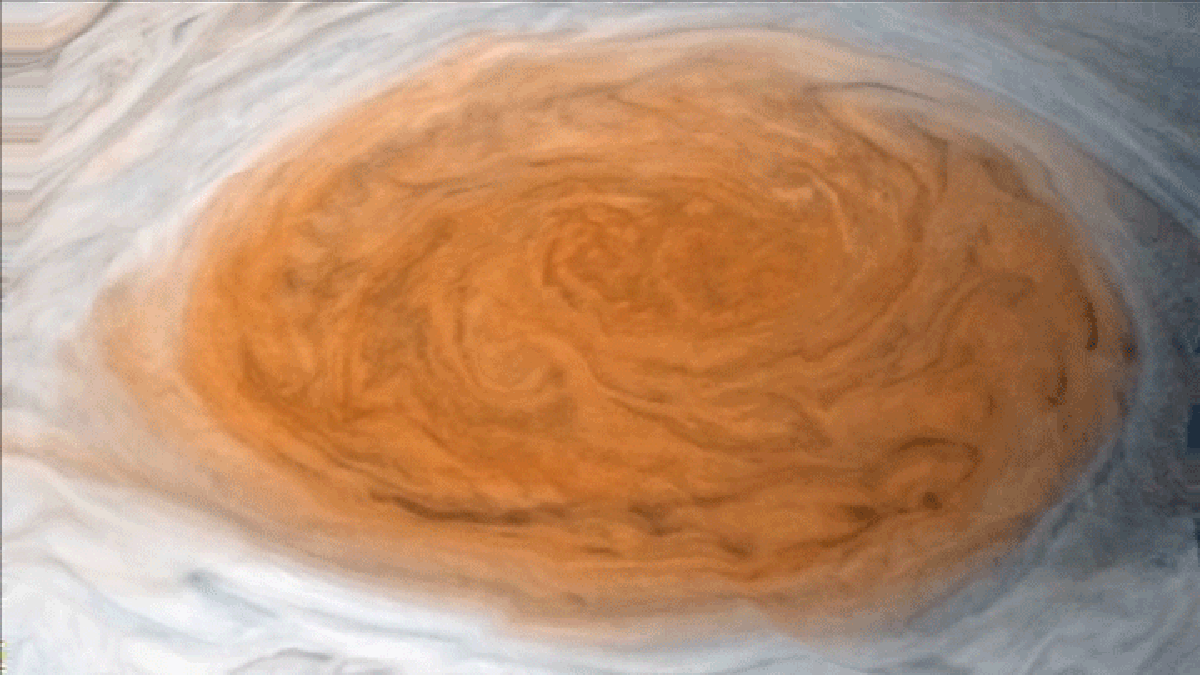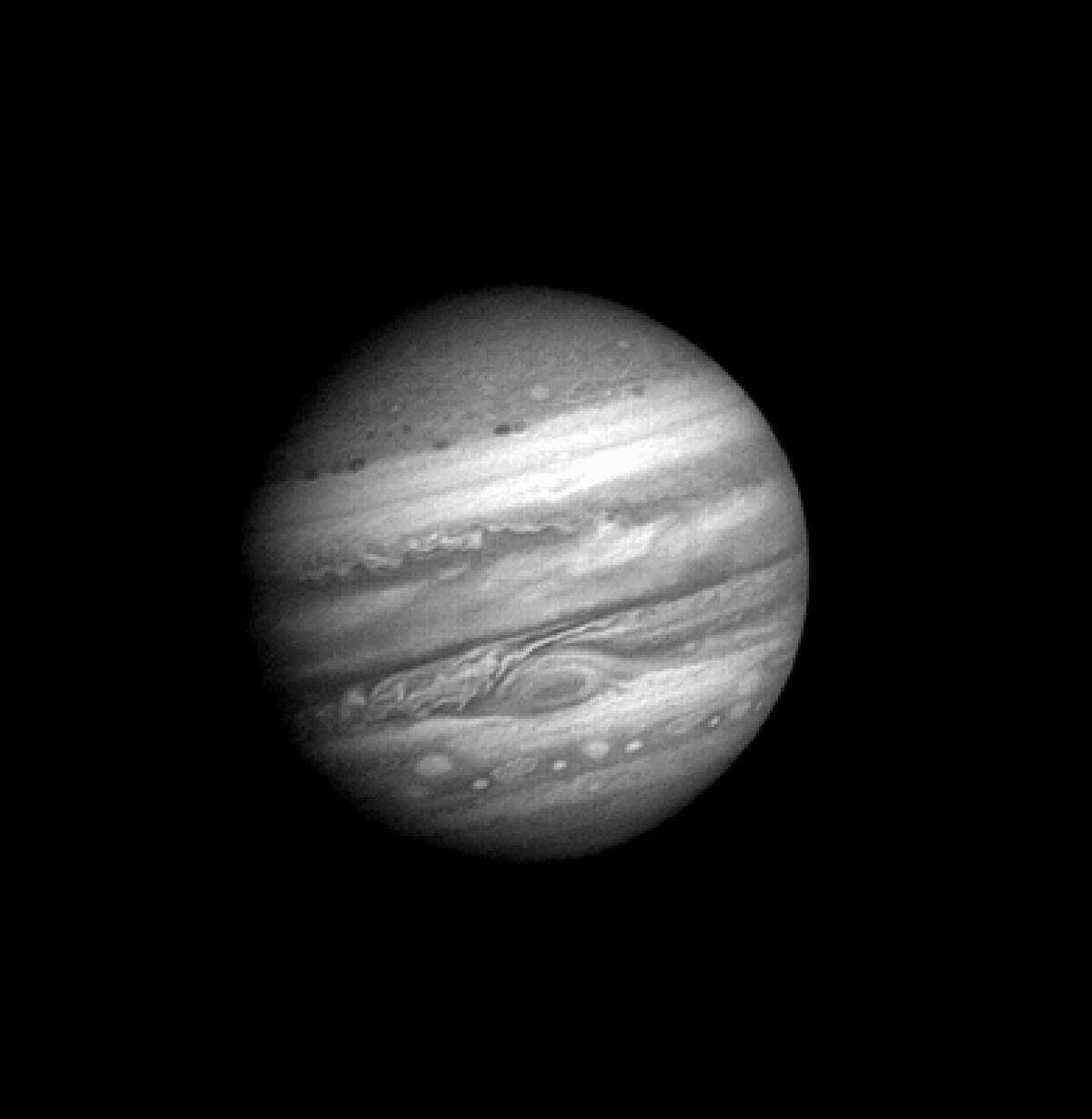
A ferocious storm has battered Jupiter for at least 188 years. From Earth, it is observed as red swirling clouds racing counter-clockwise in what is known as the planet's "Great Red Spot." But after shrinking for centuries, it may now be on the brink of disappearing for good.
"In truth, the GRS [Great Red Spot] has been shrinking for a long time," lead Juno mission team member and planetary scientist at NASA's Jet Propulsion Laboratory Glenn Orton told Business Insider in an email.
"The GRS will in a decade or two become the GRC (Great Red Circle). Maybe sometime after that the GRM"—the Great Red Memory.

NASA's Juno mission aims to better understand the origin and evolution of Jupiter. The Juno spacecraft passed by the planet for the first time in April 2017. It has captured the closest ever images of the storm, revealing how much the spot has diminished.
In the 19th century, the storm was well over twice the width of Earth according to NASA. By 2017 it had shrunk to just 10,000 miles across—that's just 1.3 times the diameter of Earth. The oval storm has diminished by one-third in width and one-eighth in height since NASA's Voyager 1 and 2 passed by Jupiter on their way to Saturn in 1979.
On Earth, even the longest storms last a matter of weeks, not years. But, on other planets they can last for incredibly long periods of time.
Orton explained: "Think of the GRS as a spinning wheel that keeps on spinning because it's caught between two conveyor belts that are moving in opposite directions. The GRS is stable and long-lived, because it's 'wedged' between two jet streams that are moving in opposite directions."

These powerful jet speeds can funnel great force onto storms spinning in the opposite direction to the planet's rotation. This keeps "feeding momentum into the vortex," Orton said.
The many thousands of miles of atmosphere surrounding Jupiter allow these storms to persist for hundreds of years, unlike on Earth.
Earth's jet streams are influenced by the closeness of the dynamic atmosphere to the planet's land and sea, as well as it's slower rotation compared to Jupiter. This leads to much less dramatic weather systems and much shorter storms.
In fact, Jupiter's storm may have been churning for even longer than scientists know for sure. Observations dating as far back as 1665 may detail the same storm. Italian astronomer Giovanni Cassini described a "permanent spot" on Jupiter, which was observed up until 1713. A dearth in recordings before 1830 makes it difficult to know if this the famous Great Red Spot.
For now, the storm is still enormous. Scott Bolton, Juno's prinicipal investigator told Newsweek last year: "The Great Red Spot is basically the largest storm in the entire solar system."
But, even titans must one day fall. "Nothing lasts forever," Orton added.
Uncommon Knowledge
Newsweek is committed to challenging conventional wisdom and finding connections in the search for common ground.
Newsweek is committed to challenging conventional wisdom and finding connections in the search for common ground.
About the writer
Katherine Hignett is a reporter based in London. She currently covers current affairs, health and science. Prior to joining Newsweek ... Read more
To read how Newsweek uses AI as a newsroom tool, Click here.








